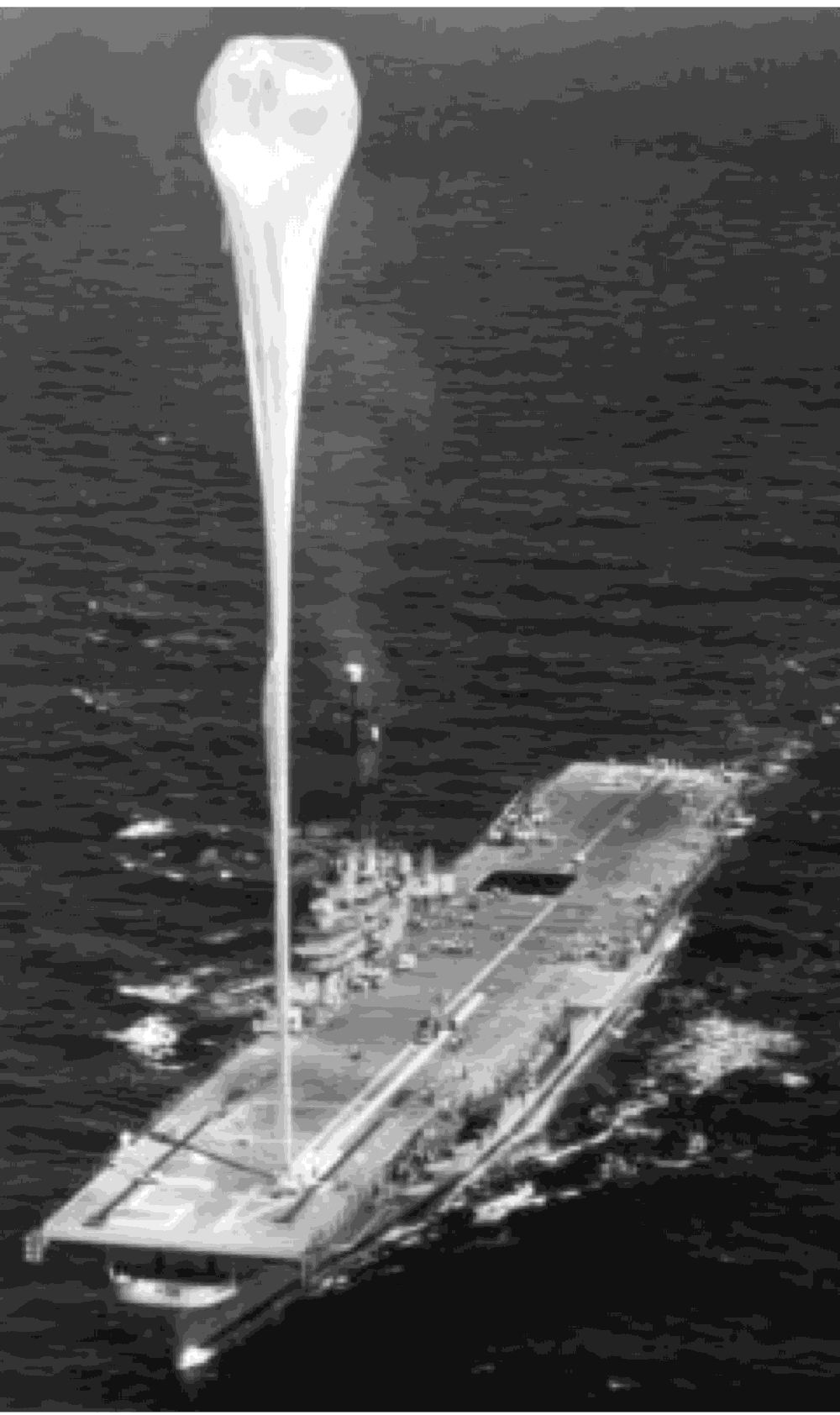
236
UNITED STATES NAVAL AVIATION
1910-1995
1960-Contin ued
Service was set up as a field activity under the man-
agement control of the Chief of Naval Operations. The
responsibilities of the new office included manage-
ment control of the integrated Fleet Weather Central
system and technical direction of meteorological mat-
ters within the shore establishment and the operating
forces.
26 January
The first of two giant unmanned bal-
loons was launched from
Valley Forge,
at sea south of
the Virgin Islands. Almost as high as a 50-story build-
ing and with a cubic capacity greater than that of the
rigid airship
Akron,
the balloons carried 2,500 pounds,
including 800 pounds of emulsion sheets to record
cosmic-ray activity. The first balloon achieved an alti-
tude of 116,000 feet and remained aloft 8 hours, while
the second reached 113,000 feet and made a flight of
Valley Forge prepares to launch Skyhook balloon l046721
2612 hours. The balloons were tracked by early warn-
ing aircraft from the carrier and shore bases, and the
instruments were recovered by a destroyer. The pro-
ject was under the joint sponsorship of the National
Science Foundation (NSF) and the Office of Naval
Research (NRL).
25 February
A Navy R6D transport, carrying mem-
bers of the Navy Band and a team of antisubmarine
specialists, collided with a Brazilian airliner over Sugar
Loaf Mountain, Rio de Janeiro. The accident took the
lives of all 26 persons on board the airliner and all but
3 of the 38 Navy men on board the R6D.
29 February
The Department of Defense announced
that two new developments in airborne mine counter-
measures had been successfully demonstrated to Navy
and Defense officials by the Navy Mine Defense
Laboratory and the Navy Air Mine Defense
Development Unit at Panama City, Fla. The first was
air-portable minesweeping gear that enabled a heli-
copter to become a self-sufficient aerial minesweeper;
the second was equipment for transferring the
minesweeping-gear towline from a surface minesweep-
er to a helicopter, from one helicopter to another, or
from a helicopter to a surface minesweeper.
29 February
Navy and Marine Corps personnel from
Port Lyautey were flown to the Agadir area of
Morocco to aid inhabitants of the city razed by a
severe earthquake. Before rescue and relief operations
were over, a Navy-wide effort brought food and cloth-
ing to the stricken people from Reserve and other
units as far away as Seattle, Wash.
1 March
A ZPG-3W airship of ZW-l returned to NAS
Lakehurst, N.J., from an Air Defense Command barrier
patrol over the North Atlantic after having been on sta-
tion for 49.3 hours and 58 hours in the air. This new
record for continuous patrol more than doubled the best
time logged by its predecessor, the smaller ZPG-2W.
18 March
On the first firing test of Project Hydra,
conducted at Naval Missile Center, Point Mugu, a 150-
pound rocket was successfully ignited underwater and
launched into the air. The test demonstrated the feasi-
bility of launching rockets while floating upright in the
water and gave promise of eliminating the cost of
launching pad construction and allowing greater free-
dom in the choice of launching sites.
25 March
In the first launch of a guided missile
from a nuclear powered submarine,
Halibut
(SSGN
587), fired a Regulus I during training exercises off
Oahu, Hawaii.
 |
2 |
 |